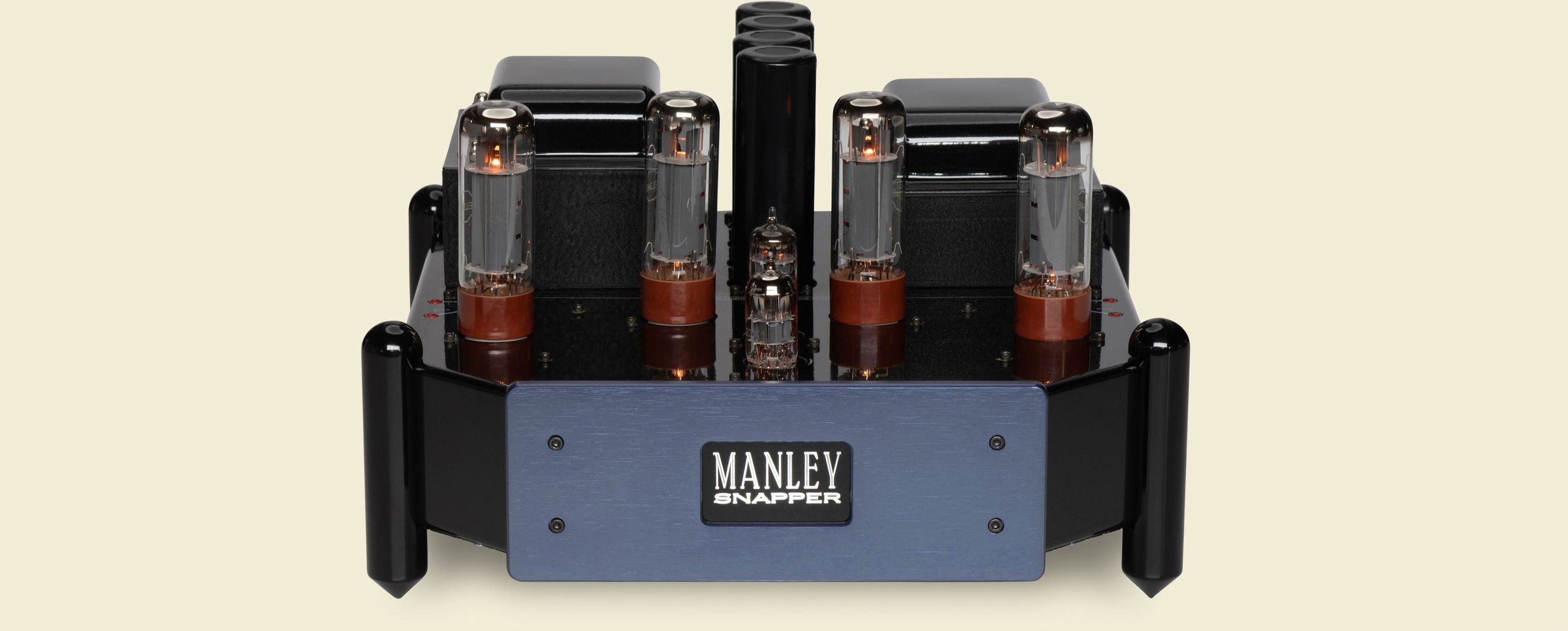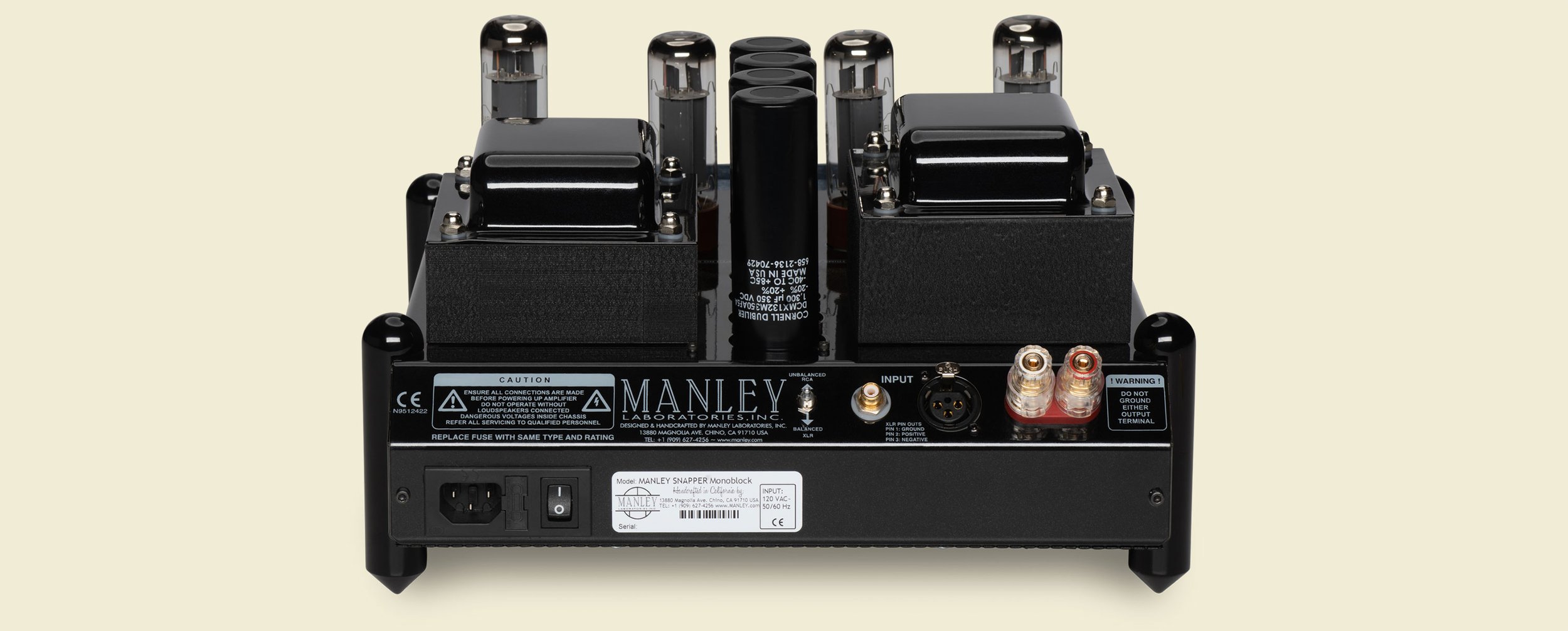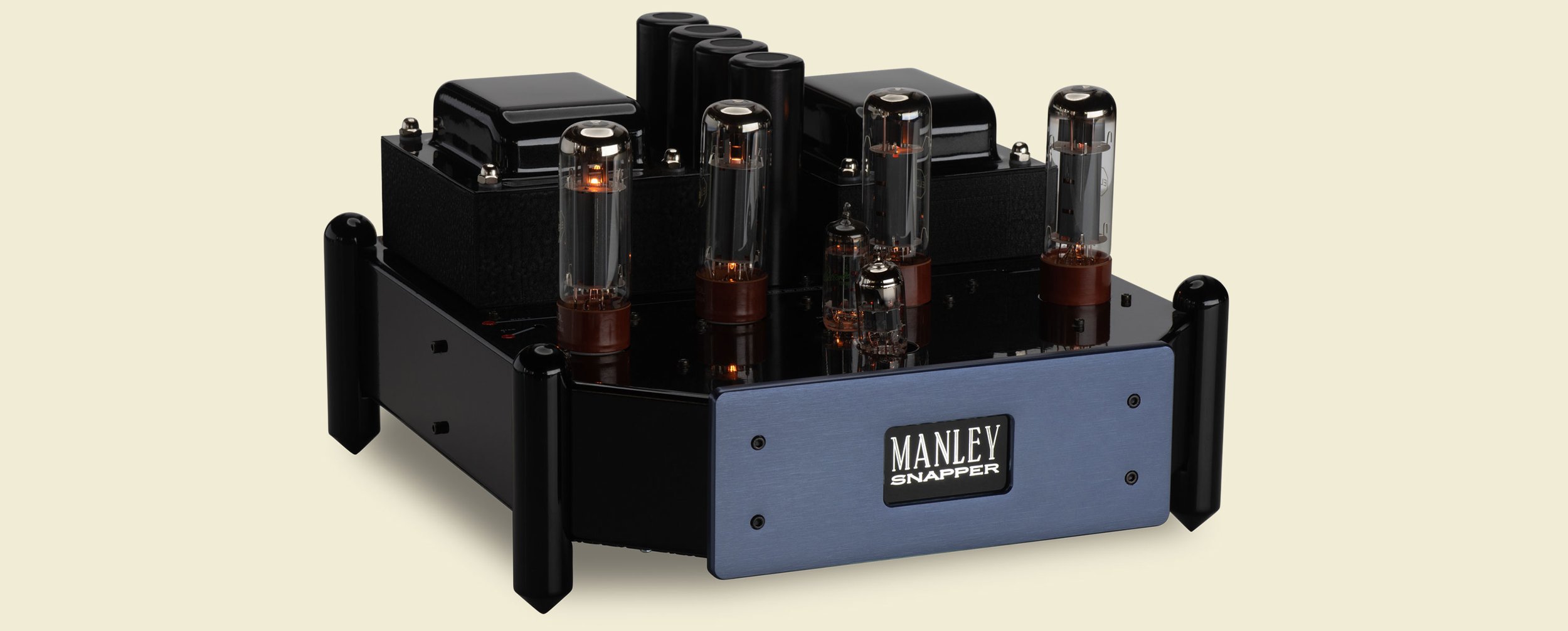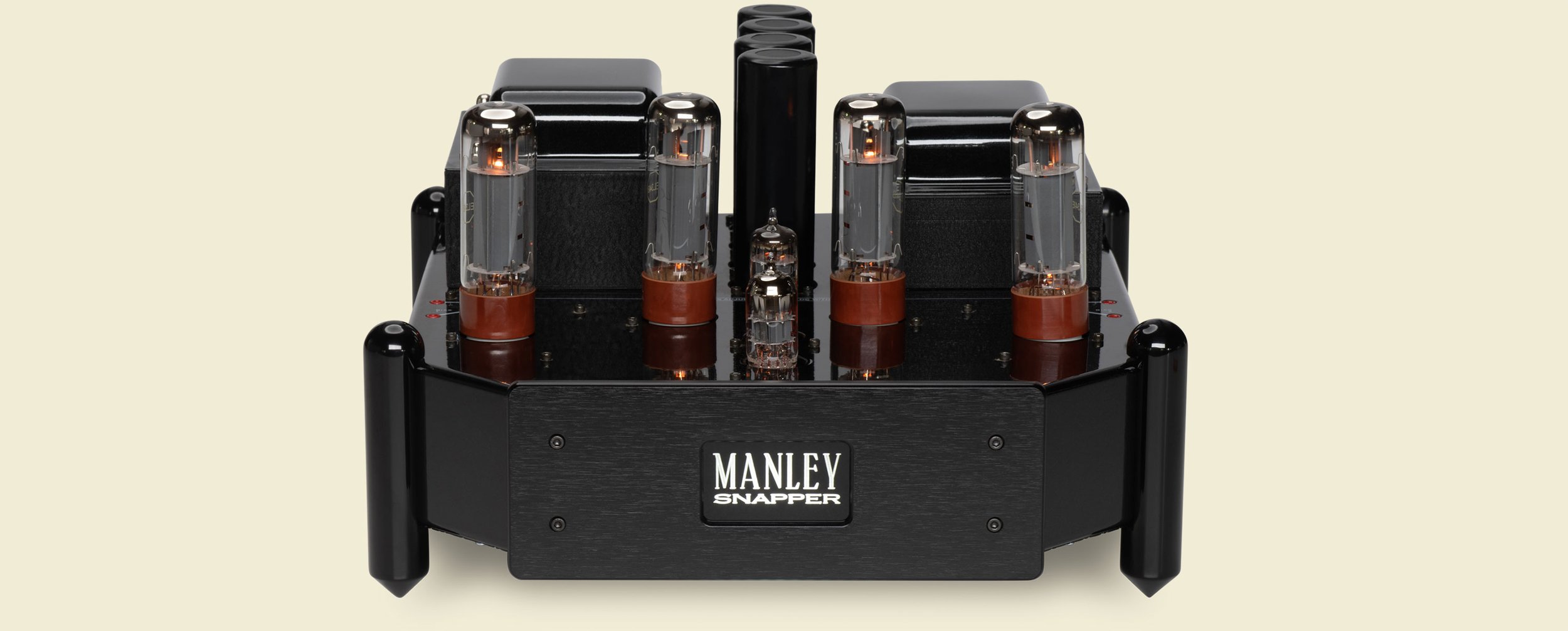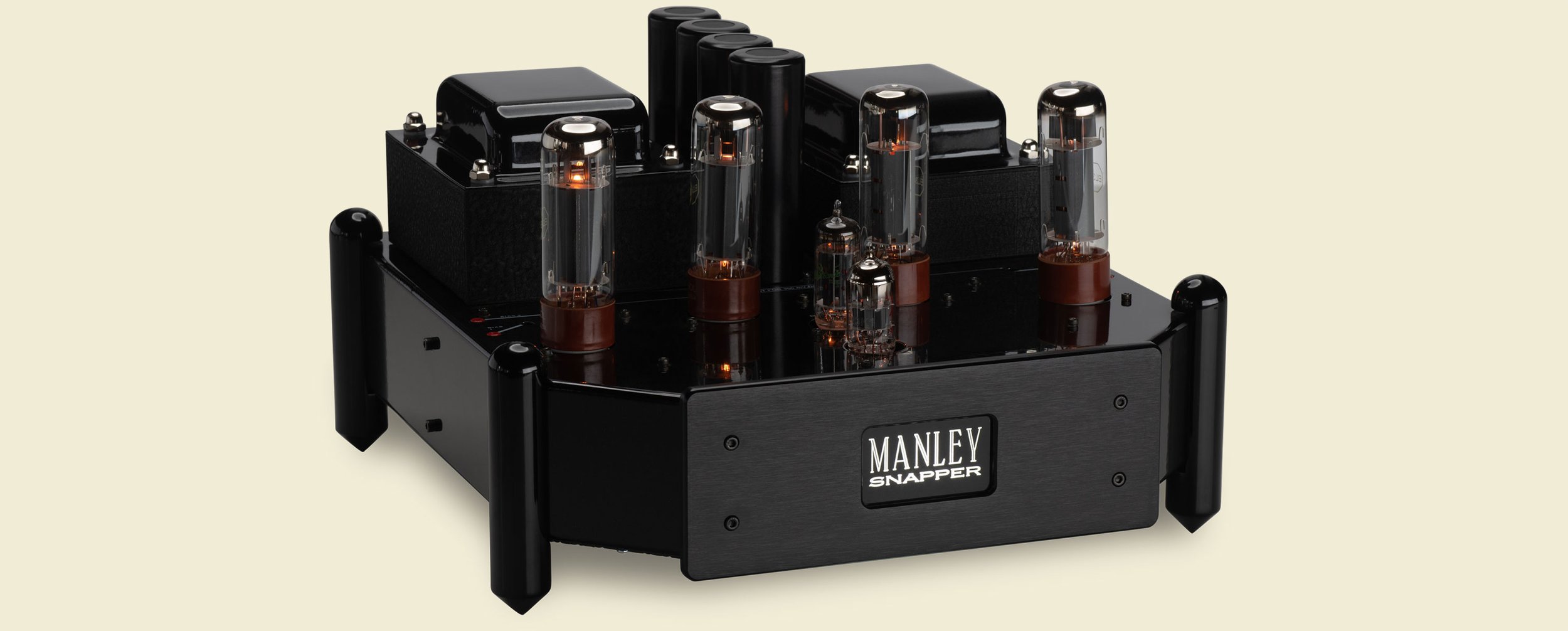
100 Watts at full power across the entire frequency band from a quartet of EL34’s in a fully differential circuit topology is only achievable with an impressive 19-layer output transformer designed and wound by us here at Manley Labs, of course. Very cleverly, the Snapper’s unique fully balanced topology can be driven via the XLR inputs or by the unbalanced RCA’s with no sonic penalty either way. Until you have experienced these beauties, you have no idea how great these Snappers sound. Strong and natural, like real music.
“…it only takes a few notes to get into the incredible chill vibe that these amplifiers provide.”
- Jeff Dorgay, TONEAudio (September 2021) -

DETAILS
In 2002 we launched a very tasty all-tube 100 watt monoblock called The Snapper® (oceanic names continuing)! Another brilliant design from Mitch Margolis, the Snapper features a quartet of EL34 or 6CA7's in a fully differential circuit topology, including the input and driver stages. This Snapper can be driven fully balanced all the way through via the XLR inputs. If you have balanced outputs on your preamplifier, this amplifier is the first Manley design to really let you take advantage of your XLR's without additional balancing input circuitry or input transformers. Very cleverly, the unbalanced RCA's can alternatively be used in this special topology with equally impressive results.
Biasing is easy with all measurement points and trimpots located on the top deck and speaker connection is made with heavy duty WBT binding posts.
Over three months of prototyping in the Manley Magnetics department resulted in a brand new output transformer design, a true 19-section incredibly complicated piece. The Snapper® will crank out 100 watts at 10 cycles all day long and a full 110 watts from about 15Hz all the way up to 40KHz. Don't let frequency response specs fool you when people give you amazing bandwidth measured at... oh, five puny watts. We're talking full power bandwidth here! Continuous duty. Real muscle.
SPECIFICATIONS
Input Impedance RCA: 475 Kohm
Input Impedance XLR: 15 Kohm or 600 Ohm switchable
Input Sensitivity RCA: 750mV input = 110W output
Input Sensitivity XLR @ 15Kohms: 1.5 V input = 110W output
Input Sensitivity XLR @ 600 Ohms: 2.4 V input = 110W output (w/600 Ohm source)
Gain RCA: factory set for 31 dB; Range = 29.5 to 34.5dB
Gain XLR: factory set for 25 dB
Negative Feedback: factory set for 9dB of global NFB
Maximum Output Power into 5 Ohms: 110 Watts (1.5% THD @ 1kHz)
Maximum Output Power into 8 Ohms: 100 Watts (1.5% THD @ 1kHz)
Signal to Noise Ratio Ref. 1W: Typically 90 dB A-WGT 20-20K
Noise Floor: Typically 105μV = -77dBu A-WGT
Typically 388μV = -66dBu unweightedDynamic Range: 98dB
THD+noise @ 1W: less than 0.1%
Frequency Response at 110W full power: 15 Hz to 40 kHz FLAT
Frequency Response at 5W into 5 Ohms: 10 Hz to 65 kHz FLAT, -3dB @ 100KHz
Recommended Speaker Load: Optimized for 5 Ohms
Actual Output Impedance: 1.5 Ohms
Power Consumption (idle): 170 Watts (1.4A @120VAC)
Power Consumption (at Full Power 110W): 336 Watts (2.8A @120VAC)
Operating Mains Voltage: Factory set for 100V, 120V or 220-240VAC operation for original destination country's mains voltage.
Operating Mains Voltage: changeable with power transformer re-wiring and fuse value change.
Mains Voltage Frequency: 50~ 60Hz
Tube Complement (per each chassis):
Input Vacuum Tube: 1 x 12AT7 (front 9-pin tube)
Driver Vacuum Tube: 1x JAN NOS GE 7044 or 5687 (equivalent) (middle 9-pin tube)
Output Vacuum Tubes: 4 x Tungsol EL34B
B+ Voltage: 570V DC
Output Tube Quiescent Standing Current: 30mA
Set Bias for: 300mVDC measured across 10 Ohm cathode resistor
Lamp type: "FuseLamp" size 1/4" X 1 1/4", 12 volt, 0.15 amp; Units built after 5/2003 use white LEDs
Fuse values & types for SN#MSNP848 and below:
120VAC operation: MDL or MDA 4A / 250 Volt SLO-BLO size 1/4" X 1 1/4"
240VAC operation: MDL or MDA 2A / 250 Volt SLO-BLO size 1/4" X 1 1/4"
Fuse values & types for SN#MSNP849 and above:
120VAC = 5A/250V SLO-BLO, 5 x 20mm
240VAC = 3.15A/250V SLO-BLO, 5 x 20mm
B+ FUSE: MDA 1/2A Ceramic SLO-BLO size 1/4" x 1 1/4" located inside amplifier, under the output transformer
Dimensions: 15" deep x 13" wide x 8.75" tall
Shipping weight each: 45 pounds
NOTES:
Prior to 2010, the Snapper utilized a different tube complement of 1x 12AT7 (input tube), 1x 5687/7044 (driver tube), and 4x 6CA7 EH (power tubes) per amplifier (x2 per pair).
If you have EL34 output tubes, stick with the 12AT7.
If your particular unit uses 6CA7 output tubes, use the 12AX7 (these will work with the EL34 as well).
If your Snappers are from the pre-2010 era and require new tubes, please contact our service department for details.
As of early 2008, the B+ fuse value was changed FROM 0.4A (4/10th Amp or 400mA) TO 0.5A (1/2 Amp or 500mA).
Same type and location inside the amplifier. MDA 1/2A Ceramic SLO-BLO 1/4" x 1 1/4"
Applies to all Snappers.
Users with existing Snappers fitted with 4/10th Amp B+ fuses can uprate their fuses to the new higher amperage part should their 4/10th amp fuse blow. No need to change to 1/2A part until/if existing 4/10th Amp fuse blows.
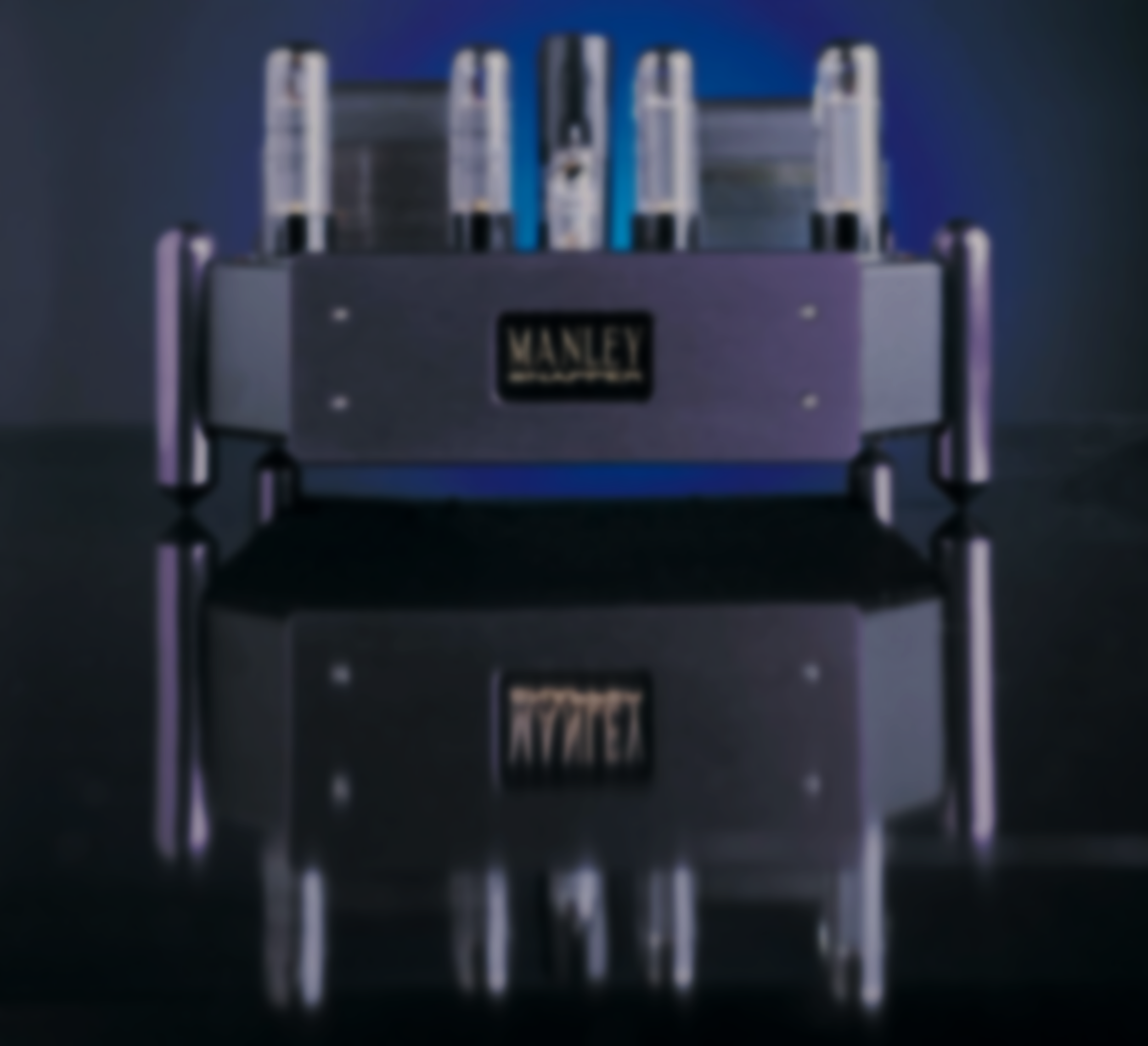
REVIEWS
“…it only takes a few notes to get into the incredible chill vibe that these amplifiers provide.”
- Jeff Dorgay, TONEAudio (September 2021)
"…solid, tuneful, positive and dynamic while adding precisely the right amount of lushness and liquidity to produce a highly refined and emotionally involving sound..."
- Christiaan Punter, Hi-Fi Advice, December 2020
"It’s like a high quality, hand-thickened gelato, where the layers are delicate and dense…there is no ‘extra sugar’ if you will, no typically ‘tubey’ warmth, goo or smear, only layers and layers of textures displayed in the room as if by holographic projector à la Star Trek."
- Grover Neville, Part-Time Audiophile, August 2020
"They’ve got grip like nobody’s business…it’s really impressive. It has this ‘sound’…dang, these things are rock ‘n’ roll. That’s how I feel. That’s what I’m hearing."
- Ron, New Record Day, April 2019
"I just wanted to tell you how wonderful my Manley Snappers are...paired with my VSR's - absolutely fabulous! The amps really are great. This is in comparison to some very expensive and good _______ Audio amps. I am going to purchase a Steelhead soon. Can't wait!"
- Customer, Jerry E.
"The true test is if a particular component heightens the emotional involvement with the music. And at this, the Manley Snapper amplifiers truly excelled."
- Jon T. Gale, The Stereo Times, April 2002
"...if you want your tunes served up in a gutsy, highly dynamic manner with a major serving of that inner righteousness that only tubes seem to provide, then the Snappers should be on your audition list."
- Bill Cowen, SoundStage!, November 2002
"...the Snappers are a pair of powerful and exceptionally quiet monoblock tube amps...They are voiced to sound sweet and clear as rainwater, while retaining a serious dynamic punch. These amps make glorious music together."
- The Inner Ear Report, June 2004
"The Manley Snappers have the subtlety and midrange layering to reward deep immersion into complex textures on one hand, and naked vocals on the other, without sacrificing sweetness or slam."
- Jim Coleman, Positive Feedback, July 2009
"The Manley Labs Snapper monoblock brings the best sonic characteristics of tube-based power amplifiers into the home theater, at a price competitive with top-flight solid-state amps."

OWNER'S MANUAL
FREQUENTLY ASKED QUESTIONS
Q: What tubes should I get for my Manley Snapper?
You can get a complete retube kit right here on our webstore.
Q: Can I use KT66 in my Manley Snapper?
No. The anode voltages in the Snapper are too high for KT66. Try KT77 or stock with the reliable EL34.

